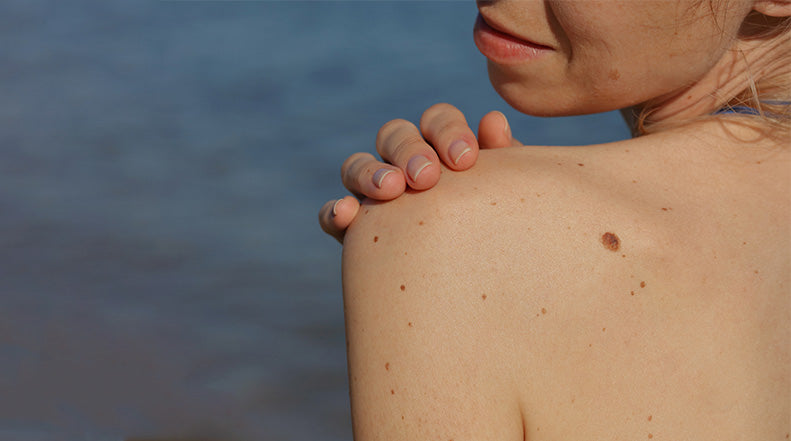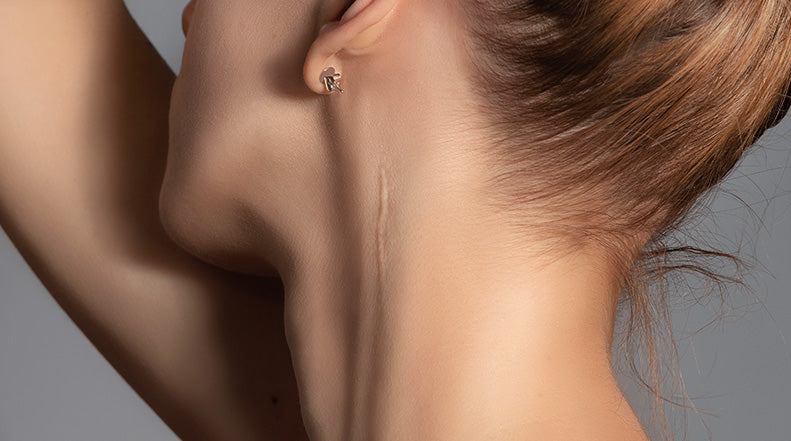7 Tips to Prevent Mole Removal Scars

While most moles are harmless, when there is a suggestion that a mole might be harmful, they can be surgically removed.
Mole removal involves one of three types of procedures. Either a surgeon removes the mole by excision, by shaving, or laser surgery removal. Almost always, this procedure will be performed on an outpatient basis at the dermatologist’s office and the patient will be allowed to return home immediately. These three types of surgeries are:
- Excision- the dermatologist uses a scalpel to cut the mole and then remove the affected tissue. Many times, suturing or cauterization is necessary to promote healing. There is a significant risk that excision surgeries will result in scarring.
- Removal by shaving involves using a scalpel blade to peel off the mole. In most cases, a scab will form in the area and later fall off, which will likely not result in a scar.
- Laser surgery involves a beam of light that breaks down cells inside the mole. Rarely does laser surgery result in a person having substantial scarring.
While mole removal is usually uneventful, one of the common complications of these surgeries is scarring. Here are eight tips to avoid scarring after mole removal.
TIP # 1 - FOLLOW THE DOCTOR’S INSTRUCTIONS
Conscientiously following all of the advice provided by the dermatologist is essential. These instructions will include details about how to clean the site, change the bandages, and at what rate and what kind of antibiotics to take. A person’s dermatologist will also likely provide tips about how to reduce scarring based on where the person’s mole was located.
One of the most important parts of the physician’s orders is making sure that wounds are carefully cleaned to greatly decrease the risk of bacteria or other types of infection.
TIP # 2 - MOISTURIZE PROPERLY
Properly moisturizing is one of the best ways to reduce the damaging effects that can result from mole removal surgery. Dry skin has the potential to make a person’s body much more susceptible to lasting scars. Only moisturize a wound, however, once a scab has begun to develop.
TIP # 3 - USE APPROPRIATE CREAMS
Many people who experience scar formation benefit from the use of creams. In some cases, a dermatologist might prescribe a product which can be used to prevent scarring. Always follow the physician’s specific advice, which in most cases means applying the cream two or three times per day for a period of twelve weeks.
TIP # 4 - ADEQUATELY MASSAGE THE AREA
Mole removal scars benefit enormously from being massaged because it promotes blood circulation in the area. With more oxygen and nutrients distributed to the area, there is less risk of scarring. It’s recommended to massage the area for at least two minutes each day.
TIP # 5 - BE AWARE OF THE MYTHS
There are a number of myths about what people should do to reduce a scar. Allowing a wound to dry out does not help it heal faster or better, and applying vitamin E is not a good strategy, either. One piece of advice is correct, though: a person should avoid smoking after a mole removal to improve scar outcome.
TIP # 6 - LIMIT ACTIVITIES
If the mole was located on an elbow, knee or other type of joint, limit straining the area for a few days to prevent pulling. Because the mole removal area will likely not be large, a person is rarely required to rest longer than this.
TIP # 7 - USE SILICONE GEL SHEETS
Silicone has been proven to be one of the most effective strategies for scar prevention that is available. Researchers have verified and individuals notice that silicone has the ability to flatten and fade scars and make even noticeable scars much less visible. NewGel+ sells a variety of products that can greatly help to combat the appearance of scars, especially their NewGel+UV silicone gel with SPF 30. Browse the website to find products that can help significantly with your mole removal scar.




Comments